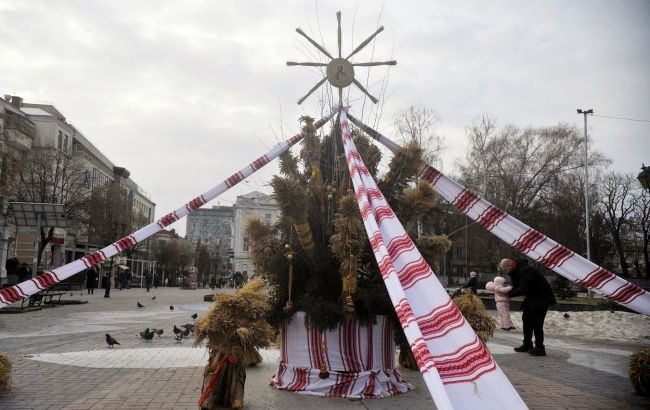Didukh vs Christmas tree: Surprising story of Ukraine's earliest holiday symbol
 How the didukh became a symbol of Christmas for Ukrainians (photo: Getty Images)
How the didukh became a symbol of Christmas for Ukrainians (photo: Getty Images)
The didukh is more than just a Christmas decoration made of rye or wheat stalks. It is a symbol of family, memory, and continuity, which Ukrainians have placed in their homes long before Christmas trees appeared. It was considered a living talisman, a messenger of ancestors, and a guarantee of prosperity in the new year. Here is why this "sheaf with a soul" became a symbol of the Ukrainian Christmas.
What the didukh is and why it has this name
A didukh is a festively decorated sheaf made from the first or last cut of rye (less often wheat), which Ukrainians brought into the house on Christmas Eve.
The name comes from the word "did," meaning ancestor. Therefore, the didukh symbolized the family line, those who lived before and those who would be born. It is not about decoration but about continuity and remembrance, which Ukrainians honor every year.
Ancient talisman predating Christianity
Ethnologists note that the tradition of the didukh is much older than the celebration of Christmas itself. A sheaf in the house was part of an agrarian cult in which grain symbolized life, harvest, and protection.
By placing the didukh in the corner of honor, the head of the household was symbolically inviting the forces of nature and the spirits of the family to be present during the darkest time of the year. It was believed that warmth, abundance, and peace entered the home together with the didukh.
How the didukh became part of the Christmas tradition
After the adoption of Christianity, Ukrainians integrated the ancient symbol into the winter holiday cycle.
The didukh became an equivalent of a forefather who comes at Christmas together with the festive meal and caroling. It was placed in the most respected place — next to icons, on an embroidered towel, often beside the kutia. It served as a sign that the entire family had gathered around one table, including those no longer alive.
 Didukh on a street in Lviv (photo: Wikipedia)
Didukh on a street in Lviv (photo: Wikipedia)
Unique features of the Ukrainian didukh that few people know
It is the first example of Christmas décor in Europe. Christmas trees appeared much later and came from German lands, while the didukh has existed in Ukrainian territories for thousands of years.
In different regions, people "fed" the didukh with kutia, sprinkled livestock with grain from it, or recited blessings for the harvest over it.
Mini didukhs were talismans of good fortune. In Galicia, small sheaves were made and given to guests as a symbol of good luck.
The didukh was a household indicator of peace. If it stood intact until Candlemas, the year was expected to be calm. If it broke, people anticipated storms or difficulties.
What a traditional didukh looked like
In its classic form, it was not just a sheaf but a constructed shape: a tall central stem made of the main stalk and "wings" on the sides. It was decorated with:
- Dried flowers
- Periwinkle
- Red ribbons
- Braided straw ornaments
- A straw cross or spider ornament
These decorations had protective meaning: red warded off evil, green symbolized life, and the knots preserved family energy.
 Small didukh (photo: Wikipedia)
Small didukh (photo: Wikipedia)
What happened to the didukh after the holidays
It was not kept indefinitely. The didukh was either burned on Candlemas or taken apart, with the grain fed to birds.
Burning was seen as a form of cleansing and renewal. It was not destroying the sheaf but returning its strength to the earth from which it grew.
Why the didukh is in style again today
The growing popularity of the didukh is not only due to the trend for ethnic crafts. It is a symbol that naturally fits into the modern Ukrainian-centered worldview:
- It is about roots and identity
- About the feeling of home
- About respect for one's own
- About the connection between generations
It is also ecological, authentic, and carries a depth that plastic Christmas trees or garlands lack.
Earlier, we wrote about how Ukrainians spent their winters before the advent of telephones and the internet.
Sources: Oleksa Voropay, ethnographic essay "Customs of our people," National Museum of Folk Architecture and Life of Ukraine, Institute of Ethnology of the National Academy of Sciences of Ukraine.

